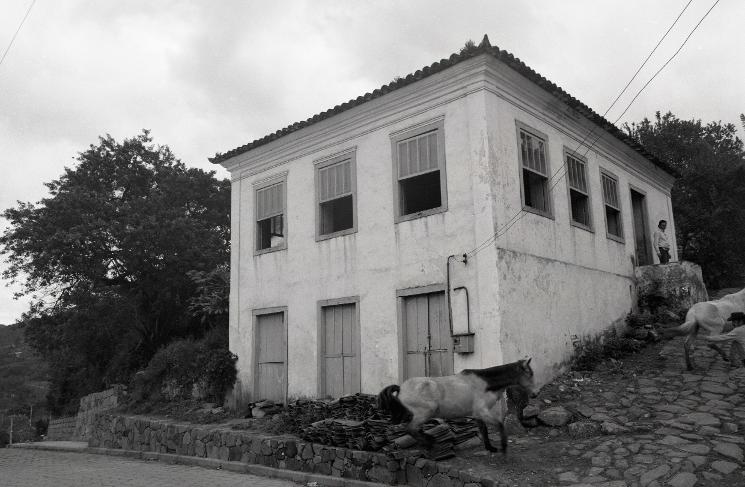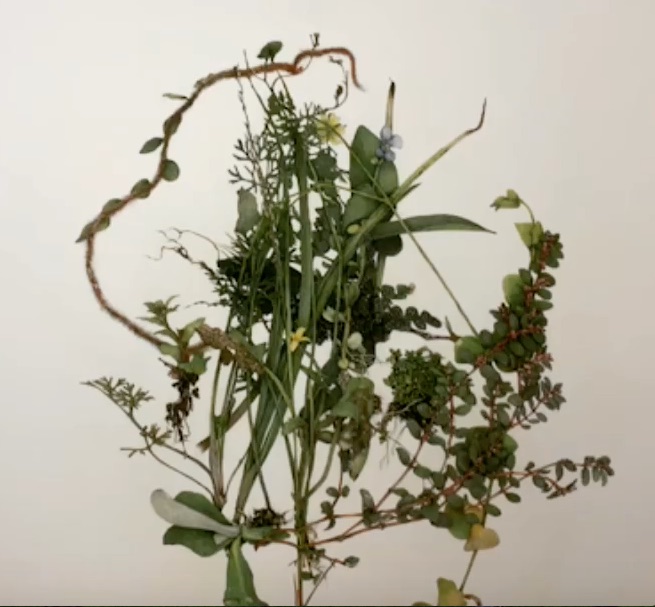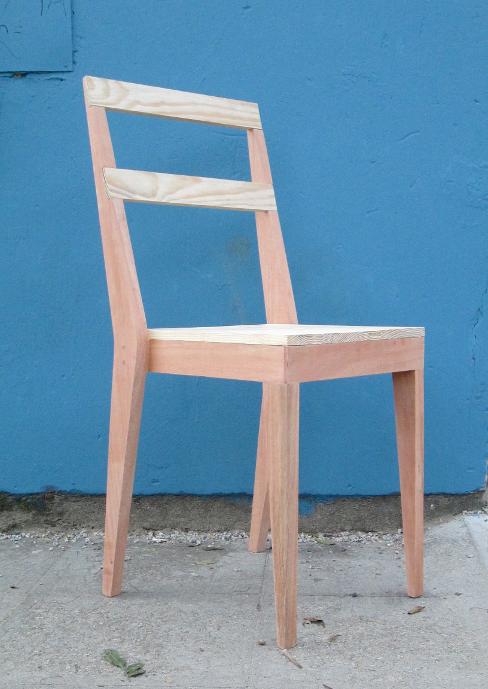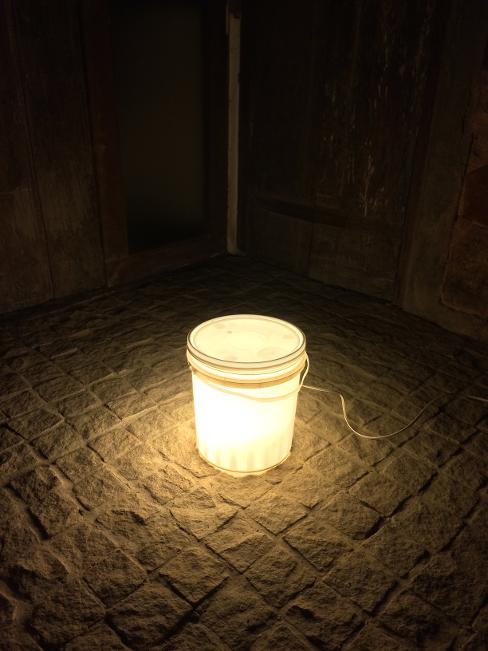

Living Archive project. Photo Guto Sisson. Copyright sobradonaladeira
Walmor Correa "Erva Daninha. Juntas = Forca Maior"
Happening now
Living Archive Project
This project entails the making of a living archive of the colonial house Sobrado na Ladeira and its surroundings, aiming to collect material so as to continuously build an archive, serving as resource for memory, regeneration and appreciation of the material and immaterial heritage, as well as support for the development of a relevant socio-cultural program for the Sobrado house and surroundings.
We are working with oral mnseic narratives – local, personal accounts of descendants of the family who once owned the house, personal accounts of neighbours and locals who share rapports, memory and/or knowledge related to the house and Lagoa da Conceicao neighbourhood.
In the Mnesic Conversations acts, we will invite visitors to the Sobrado house and welcome them to tell their story.
We are also re-visiting the photographs taken in the late 80s by photographer and friend Guto Sisson - the most comprehensive visual documentation that exists of the house since its construction ca 1840.
Convivialities on-site
with Isabel Kanan, Marcelo Ferraz, João Bohn Neto, Sobrado House October
Conversing Sobrado and Casa da Lagoa As part of my Convivialities on and beyond site practice, condition for work that involves inhabiting and cultivating different conversations with physical and symbolic communities connected with the Sobrado house, and articulations that derive from them, architects Marcelo Ferraz, Isabel Kanan and Joao Bohn engaged in dialogue.
Watch the video
The quality of the historical to coexist in past, present and future narratives is the manner of working of Marcelo Ferraz, co-founder of Brasil Arquitetura - commissioned to draw a contemporary program for the Sobrado house and a new unit on an empty lot that existed across the street. They managed to draw a piece that exceeded all our poetic expectations of new frames, dialogues and perspectives, binding the Sobrado - the old house - with the new Casa da Lagoa - new house. To build in this lot was as much a desire for dialogue between times, as an act of reiterating the historicity of our neighbourhood, and cultural parish. Here they discuss this collective project, the meanings of restoration and heritage, and of places that have perhaps always been places.
Artist-in-residence October - November 2018
Relational process and micro-landscapes: Walmor Correa collects and depicts a tiny green growth found on the stone wall of the backside veranda. The organic nature of the house in the built and unbuilt. Walmor´s cartography sheds affection and artistic craft. "From that which can pass our sight unnoticed, that which from being small generated the strength which makes us visible..."mistrust" those who suffer because they learn to defend themselves". Walmor Correa, Sobrado November 2018.
Atelier residence June-November 2017
Resident visual artist Letícia Cardoso worked in the Sobrado.
We are interested in an architecture that affects and generates possibilities. Cardoso describes her days in the Sobrado: the hours she´s present, the smells the wood imprint on her, the opening and closing of the windows. We begin to understand her process as engendering substance for the Sobrado, and the Sobrado generating process within her artistic practice. Cardoso delivers the unfolding of her 4-month-stay: her weekly dislocation between downtown Florianópolis and the Freguesia and the colonial Sobrado, how she "slowly built an intimacy with the place, and an atemporal experience of time-space onto my dailyness. My personal memory cast onto the walls, wove with the house a new memory, just as the temperature of the stone walls and the color of the wood in the windows and ceiling influenced the choice of colours in the paintings". Cardoso hauls past and present, overlapping histories, generating counter-narratives. Layers of gestual integration where writing, painting, talking, and moving engender agency between a historical moment and the digging afresh of new meanings. This is not cerimonial nor archeological, but perhaps it should be seen as an evocative performance of embodied time-lapses.
Click here to view
"O baile de ´68". Letícia Cardoso, 2017/2018. Copyright Letícia Cardoso.
Artist in residence March/April 2017
Resident visual artist Célio Braga worked and lived in the Sobrado.
Braga´s work and practice began permeating the space, establishing synchronicity. Which touches exactly upon what we are, at the moment, looking for within the frame of the residency program: how built heritage and contemporary practices can interrelate and affect one another, evidencing material and immaterial perspectives that each day brings.
Braga began finding his space within this given space. Within the given space of this architecture. He began finding the symbolic keys to this place, through his gaze and artistic practice, and began building a working atmosphere that filled the space.
The Sobrado is then over-taken, or taken over, through overlays, intersections, touching, relating, affecting, connecting. A new narrative is built in this space.
At the end of the day, we are met with Braga´s way of empowering the space of the Sobrado, giving each day additional layers of exchange, and opening new possibilities of and for this space. He leaves the Sobrado with new memories, new meanings and instances for future meetings.
Before Braga left, we entrusted him with some memorabilia pieces. A continuous dialogue flows and our own model of residency and cultural exchange begins to take shape: Braga will be a guest artist-resident next year in Sweden, where together we will have the chance to dialogue around this memorabilia, the passing of time, and the cultural immersions between Sobrado, Stockholm and even Amsterdam, where he also lives.
Follow his days at the residency on Instagram at @sobradonaladeira
The residency is interdisciplinary and emphasises the importance of meaningful and multi-layered cultural exchange and immersion into another culture, having the colonial house as the means for this experience, how built heritage and contemporary practices interrelate and affect one another.
Célio Braga. Untitled, 2017. Cuts, perforations, embossing, stitching and fragments of photography on paper. 24 cm x 33 cm. Copyright Célio Braga
The residency experience is only the beginning of a longer relationship. We envision that a guest-resident returns to perhaps complete a project they started, to begin a new collaboration, or participate in exhibitions, workshops, or propose their own initiatives. For us, this is the most valued outcome of the stay. The guest-resident is encouraged to document any and all work undertaken during their stay, as well as document their experience.
In 2015 and 2016 we invited Swedish designer Fredrik Forsman as our guest artist -in-residence. Forsman developed a cross-cultural chair and utensils. The pieces express a deep dive into Brazilian material culture and its translation through Swedish form-language. Forsman worked with local craft and upcycled or eco local wood. The pieces have been added to the living archive of the residency.
During his stay, Forsman opened up the residency for a community workshop and the outcome is the Bucket Lamp, design based on re-situating local materials.

